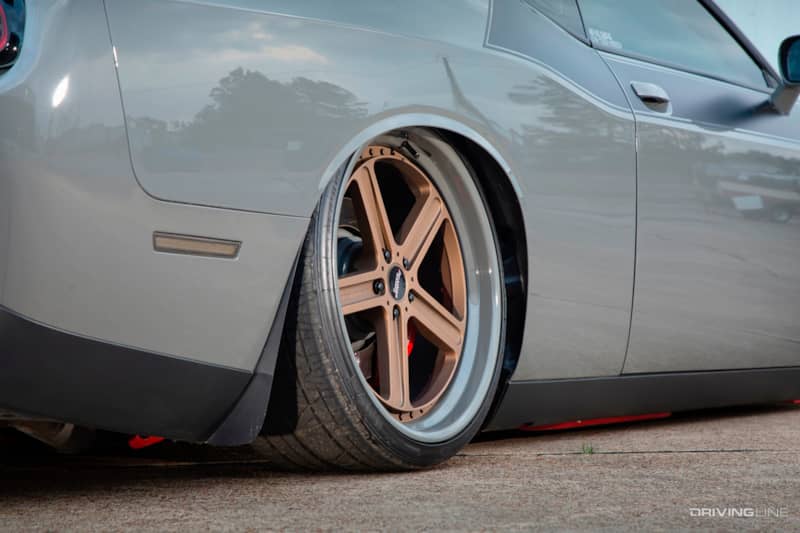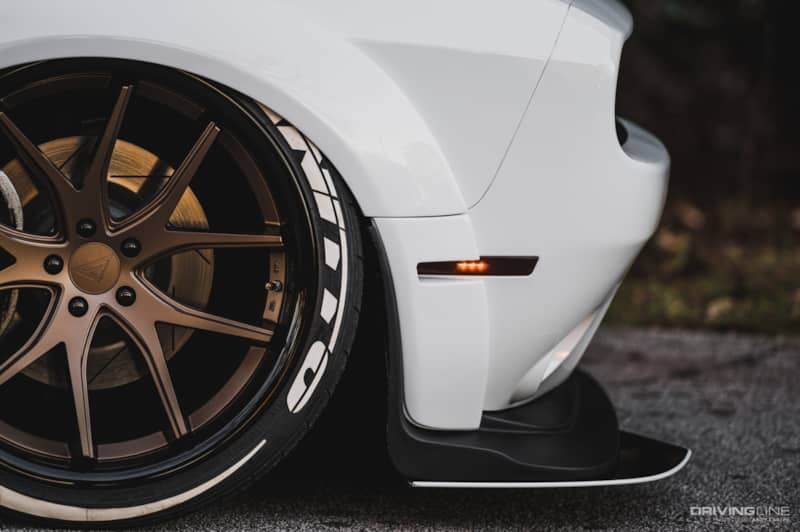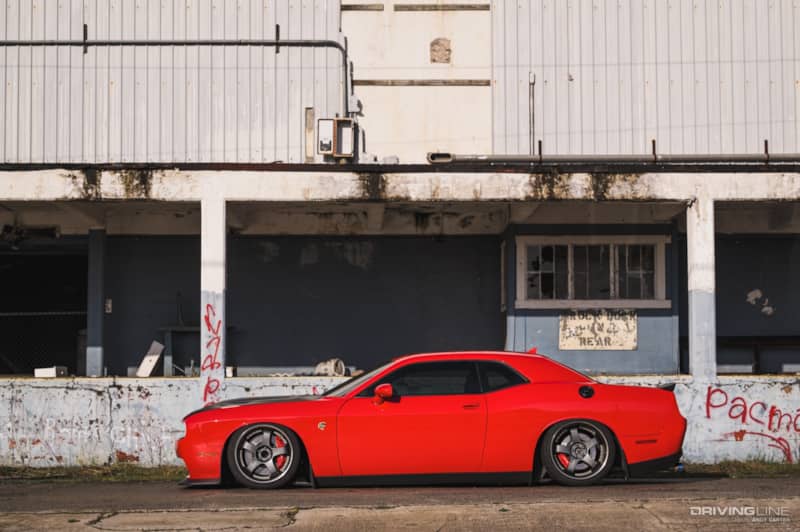Do Modern Muscle Cars Benefit from Lowering?
Lowering a performance car's suspension is a time-honored tactic used by owners seeking a more aggressive visual stance for their vehicle as well as improved performance. Modern muscle cars, however, come with far more sophisticated chassis setups than those found under their predecessors, which can complicate what was once a simple question of swapping out a set of springs with a lowering kit.

In fact, as muscle machines push ever closer to the sports car side of the spectrum their suspensions have become increasingly complex, tuned to deliver an impressive level of handling right from the factory floor. This begs the question: are there any real benefits to lowering a modern muscle car? Or should owners trust in the engineering wizards who put the car together and leave well enough alone?
Why Go Low?
First, a bit of a refresher on what lowering a car brings to the table in terms of driving dynamics. Dropping a vehicle's ride height pushes its weight down towards the road, which from a physics perspective is often enough to help improve handling. With the mass of the automobile riding low, it's able to stay flatter through a corner, reducing body roll and better managing weight transfer.

That being said, suspension systems are a lot more complex than simply dialing in ground clearance. The ride height of a vehicle also directly affects settings like wheel camber and toe, suspension travel, and shock absorber performance, all of which can directly impact steering feel, turn-in, ride comfort, and stability.

Changing a vehicle's suspension geometry has a direct and measurable impact on its ability to hold the road. With so much testing and expertise poured into chassis setup during the design phase, lowering ride height without taking into account other important suspension settings can set drivers up for disappointment.

Then there are considerations to make regarding shock absorber selection. Increasingly, muscle cars are outfitted with adaptive suspensions that make use of adjustable dampers, which are tuned to perform at their best at stock ride height. Changing how high the vehicle sits off the ground can have a follow-on effect with shocks that may transform how a vehicle rides for the worse. Even a standard shock absorber has a specific operating profile that might not match up with a set of lowering springs.
Understanding The System
If esthetics are the most important thing, then you might be willing to tolerate a harsh ride or somewhat less precise handling as the price to pay for a slammed muscle car. For those seeking to improve overall performance, there are several key steps that need to be taken as part of any suspension lowering strategy.

The first is to recognize the effects of the new suspension geometry and make adjustments to offset any negatives that have been introduced by the new ride height. Some modern muscle cars make it easy to adjust things like camber, caster, and toe, but others will require additional aftermarket hardware installed (control arms, camber plates) in order to take maximum advantage of the lower ride and maintain the best possible tire contact patch.

Next, it's time to evaluate the hardware that came from the factory and figure out if it will play nice with your lowering solution. You'll need to know the spring rate of the lowering kit you are using, and understand how that matches with the rebound and compression valving of the shocks installed on the car. This true whether you're keeping the stock units in place or choosing an aftermarket solution.

In some cases, if you want to maintain the in-car adjustability of the dampers you won't be able to move away from stock shocks without spending considerable money. If you're ok with losing that capability, choosing a set of coilovers with matched springs and shocks (and manual adjustability) is often a better solution that simply hoping for the best with a lowering spring kit. There are even some aftermarket solutions specifically designed to play nice with adjustable and adaptive dampers right out of the box.
Don't Cut Corners—Or Coils
What's the bottom line? For factory track specials like the Ford Mustang GT350 or the Chevrolet Camaro SS 1LE, it's not necessarily inexpensive or easy to surpass factory suspension tuning by way of the aftermarket—and it's certainly going to require more than just dropping the ride height to make meaningful gains in handling and not upset a carefully-engineered chassis.

For less specialized muscle cars improvements are easier to make, but only if the suspension is approached as a system rather than simply making a few parts upgrades here and there. A comprehensive approach to lowering modern muscle can yield solid results for those willing to make the effort to learn how each chassis element and setting works together out on the road.







